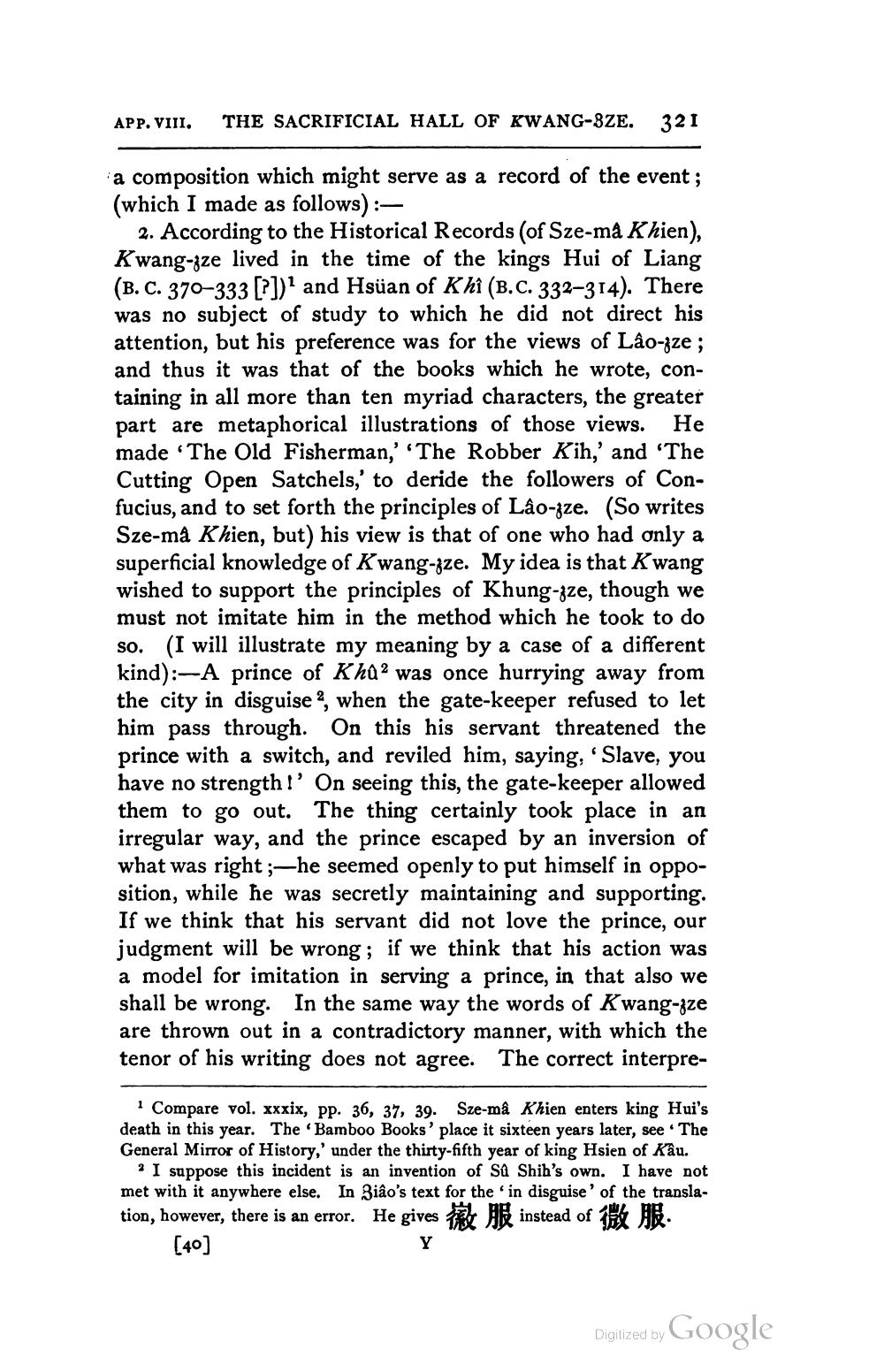________________
APP. VIII.
THE SACRIFICIAL HALL OF KWANG-BZE. 32 I
a composition which might serve as a record of the event; (which I made as follows) :
2. According to the Historical Records (of Sze-mà Khien), Kwang-zze lived in the time of the kings Hui of Liang (B. C. 370-333 [?]) and Hsüan of Khi (B.C. 332-314). There was no subject of study to which he did not direct his attention, but his preference was for the views of Lâo-zze ; and thus it was that of the books which he wrote, containing in all more than ten myriad characters, the greater part are metaphorical illustrations of those views. He made “The Old Fisherman,' The Robber Kih,' and 'The Cutting Open Satchels,' to deride the followers of Confucius, and to set forth the principles of Lâo-zze. (So writes Sze-mà Khien, but his view is that of one who had only a superficial knowledge of Kwang-zze. My idea is that Kwang wished to support the principles of Khung-gze, though we must not imitate him in the method which he took to do so. (I will illustrate my meaning by a case of a different kind):-A prince of Kha2 was once hurrying away from the city in disguise , when the gate-keeper refused to let him pass through. On this his servant threatened the prince with a switch, and reviled him, saying, Slave, you have no strength t' On seeing this, the gate-keeper allowed them to go out. The thing certainly took place in an irregular way, and the prince escaped by an inversion of what was right;-he seemed openly to put himself in opposition, while he was secretly maintaining and supporting. If we think that his servant did not love the prince, our judgment will be wrong; if we think that his action was a model for imitation in serving a prince, in that also we shall be wrong. In the same way the words of Kwang-zze are thrown out in a contradictory manner, with which the tenor of his writing does not agree. The correct interpre
1 Compare vol. xxxix, pp. 36, 37, 39. Sze-mà Khien enters king Hui's death in this year. The 'Bamboo Books' place it sixteen years later, see. The General Mirror of History,' under the thirty-fifth year of king Hsien of Kâu.
. I suppose this incident is an invention of Sa Shih's own. I have not met with it anywhere else. In Ziao's text for the 'in disguise' of the translation, however, there is an error. He gives AR instead of the AR.
[40]
Digitized by Google




